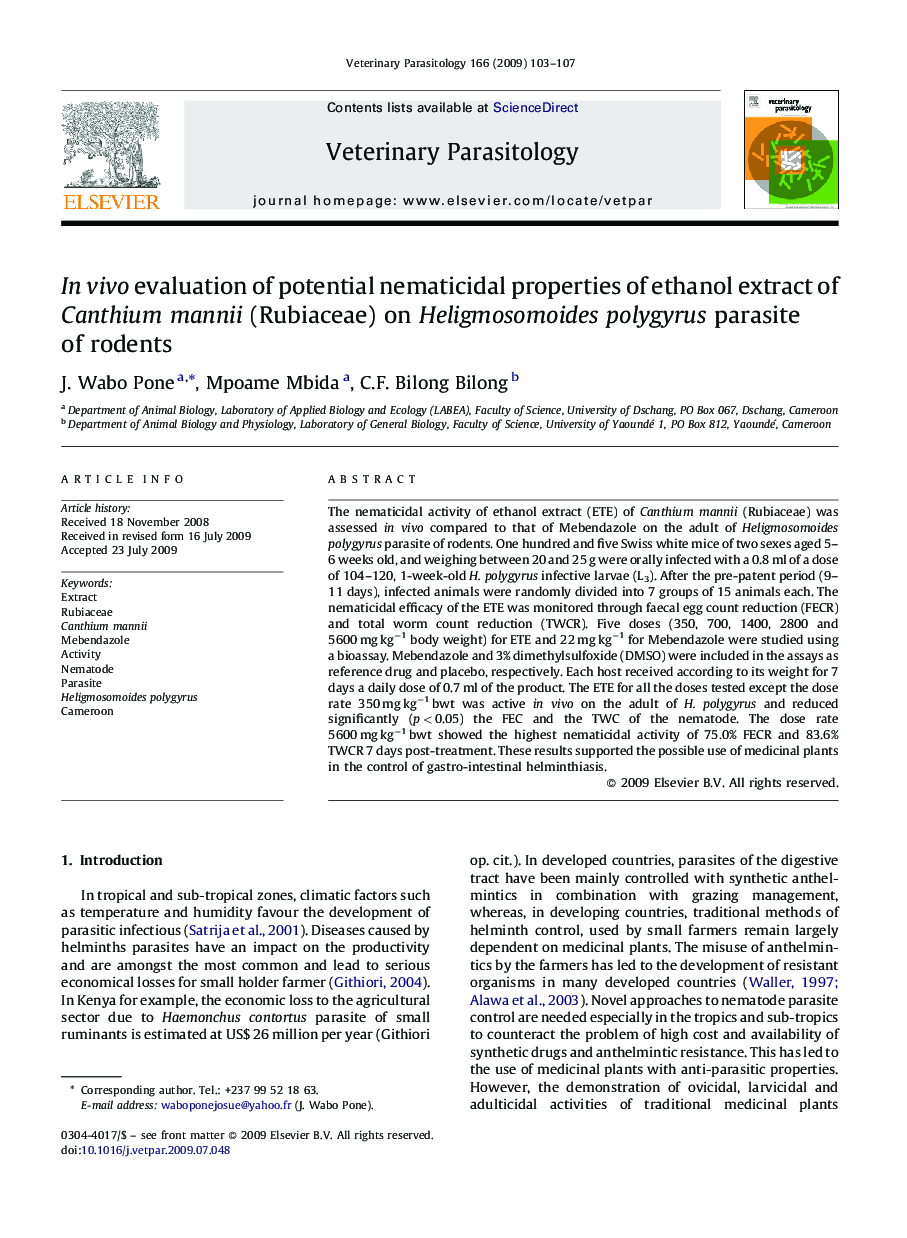| Article ID | Journal | Published Year | Pages | File Type |
|---|---|---|---|---|
| 2471030 | Veterinary Parasitology | 2009 | 5 Pages |
The nematicidal activity of ethanol extract (ETE) of Canthium mannii (Rubiaceae) was assessed in vivo compared to that of Mebendazole on the adult of Heligmosomoides polygyrus parasite of rodents. One hundred and five Swiss white mice of two sexes aged 5–6 weeks old, and weighing between 20 and 25 g were orally infected with a 0.8 ml of a dose of 104–120, 1-week-old H. polygyrus infective larvae (L3). After the pre-patent period (9–11 days), infected animals were randomly divided into 7 groups of 15 animals each. The nematicidal efficacy of the ETE was monitored through faecal egg count reduction (FECR) and total worm count reduction (TWCR). Five doses (350, 700, 1400, 2800 and 5600 mg kg−1 body weight) for ETE and 22 mg kg−1 for Mebendazole were studied using a bioassay. Mebendazole and 3% dimethylsulfoxide (DMSO) were included in the assays as reference drug and placebo, respectively. Each host received according to its weight for 7 days a daily dose of 0.7 ml of the product. The ETE for all the doses tested except the dose rate 350 mg kg−1 bwt was active in vivo on the adult of H. polygyrus and reduced significantly (p < 0.05) the FEC and the TWC of the nematode. The dose rate 5600 mg kg−1 bwt showed the highest nematicidal activity of 75.0% FECR and 83.6% TWCR 7 days post-treatment. These results supported the possible use of medicinal plants in the control of gastro-intestinal helminthiasis.
